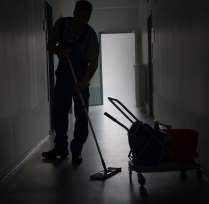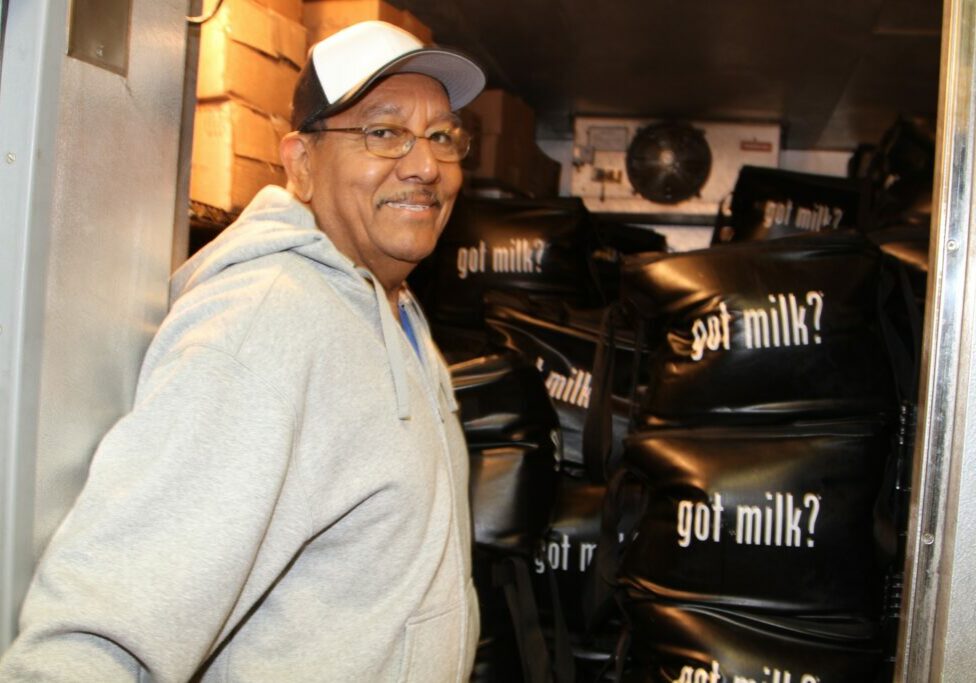Custodial and maintenance employees are truly the guardians of safety and health for students, staff and the community.
One of their most important responsibilities is to help districts ensure good indoor air quality, uniform temperatures and healthful ventilation in the over 2,500 school buildings in New Jersey.
Given that schools are four times more densely populated than office buildings and often have old ventilation systems, this is a huge challenge. Because they work directly with them, custodians suffer the highest exposures to chemical products used in floor care, glass cleaning, disinfection, and indoor and outdoor pest control.
Purchasing and using only least-toxic products for these tasks would protect not just custodians but every member of the school community.
 MANY AND DIVERSE DUTIES AND HAZARDS
MANY AND DIVERSE DUTIES AND HAZARDS
Custodial educational support professionals(ESPs) include custodians, housekeepers,building and grounds maintenance staff, laborers, helpers, warehouse personnel,mechanics and non-managerial supervisors.
Their workloads continue to grow as new technology and equipment requires new skills and increased duties and responsibilities.For example, maintaining central heating, ventilation and air conditioning (HVAC) systems is completely different from maintaining boilers and radiators and under-window unit ventilators. And maintaining artificial turf is different than traditional lawn maintenance.
In addition to the cleaning duties most often associated with custodial jobs, custodians perform a wide array of other tasks,such as disinfecting for contagious disease prevention, preparing garden beds for botany courses, making electrical repairs,cleaning up laboratory and other spills, and plastering and painting. Custodians work at heights on ladders and staging and in confined spaces such as boilers and crawlspaces. They are exposed to noise and exhaust from portable tools and equipment such as leaf blowers, lawn mowers and lawn edgers.
Custodians do a lot of heavy physical work — handling trash, clearing snow,polishing floors, and rolling out and pushing back bleachers — that requires lifting,pushing, pulling and twisting. Because of these diverse hazards, custodians are at risk for falls, cuts and abrasions, hernias and back injuries, hearing loss, and electrical shock and electrocution.
Finally, custodians must deal with occupational health hazards such as heat and cold stress, mold, cleaning and disinfection chemicals, paints, solvents and other hazardous materials, and the lead paint and asbestos still present in many older school buildings. These exposures put them at risk for occupational diseases from dermatitis to asthma to cancer.
Custodians and the entire school community are at risk from polychlorinatedbiphenyls, or PCBs in pre-1978 caulk and pre-1979 fluorescent light ballasts. See the sidebar for news of an alarming recent rollback of protections from PCBs.
STAFFING CUTS AND PRIVATIZATION
Budget pressures in some school districts have led to cuts in custodial staff and privatization and the contracting out of custodial services. These cuts are shortsighted for at least two reasons — they lead to the physical deterioration of school facilities, and expose custodians to greater safety risks. This happens when jobs that should be done by at least two people are attempted by custodians working alone, when custodians perform work outside their job descriptions and when custodians work too fast to meet unreasonable workload demands.
LOCAL ASSOCIATION ACTION PLAN
Local associations should work with their UniServ field representatives to safeguard custodians, and thus the whole school community, in meaningful ways. Key demands should include:
- Written job descriptions that include health and safety protections and procedures.
- An end to privatization attempts and cutbacks in custodial staff.
- Dollies, hand trucks or carts for heavy loads.
- Walk-off mats at every entrance to trap dirt.
- Purchase of least-toxic cleaning products.
- Cleaning methods that don’t raise dust, such as wet wiping and mopping,microfiber mopping and high-efficiency particulate air (HEPA) vacuuming.
- Training in back-injury prevention and proper lifting.
- Personal protective equipment (PPE)for eyes, face, feet, hands and more when needed.
- Specific training on state and federal safety and health regulations on confined space entry, electrical lockout/tagout, fall protection, blood borne pathogens, PPE,Integrated Pest Management (IPM), and hazard communication on asbestos, lead,PCBs, solvents and paints, cleaning products and so forth.
Adrienne Markowitz holds a Master of Science in Industrial Hygiene from Hunter College, City University of New York. Eileen Senn holds a Master of Science in Occupational Health from Temple University in Philadelphia. They are consultants with the New Jersey Work Environment Council, which is a frequent partner with NJEA on school health and safety concerns.
